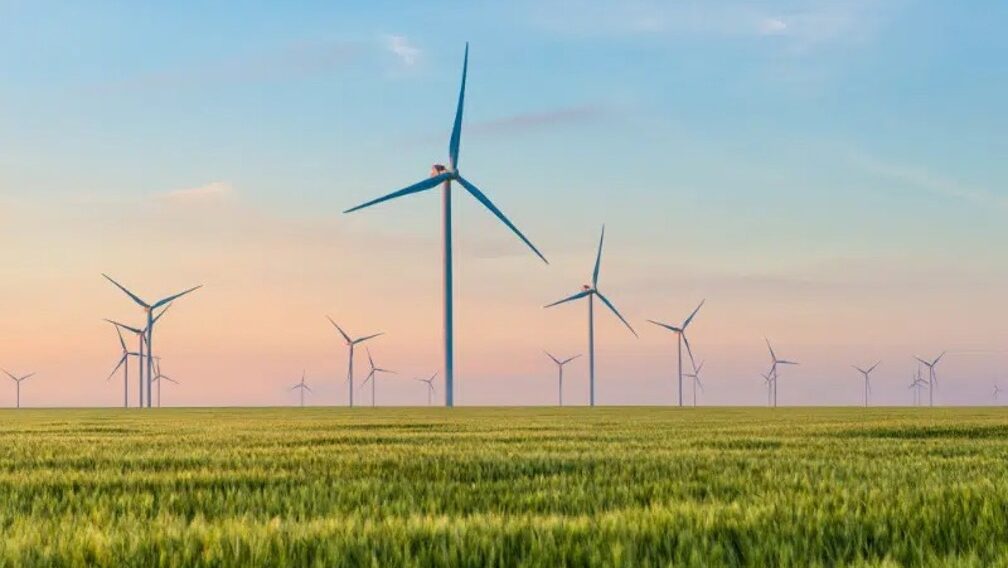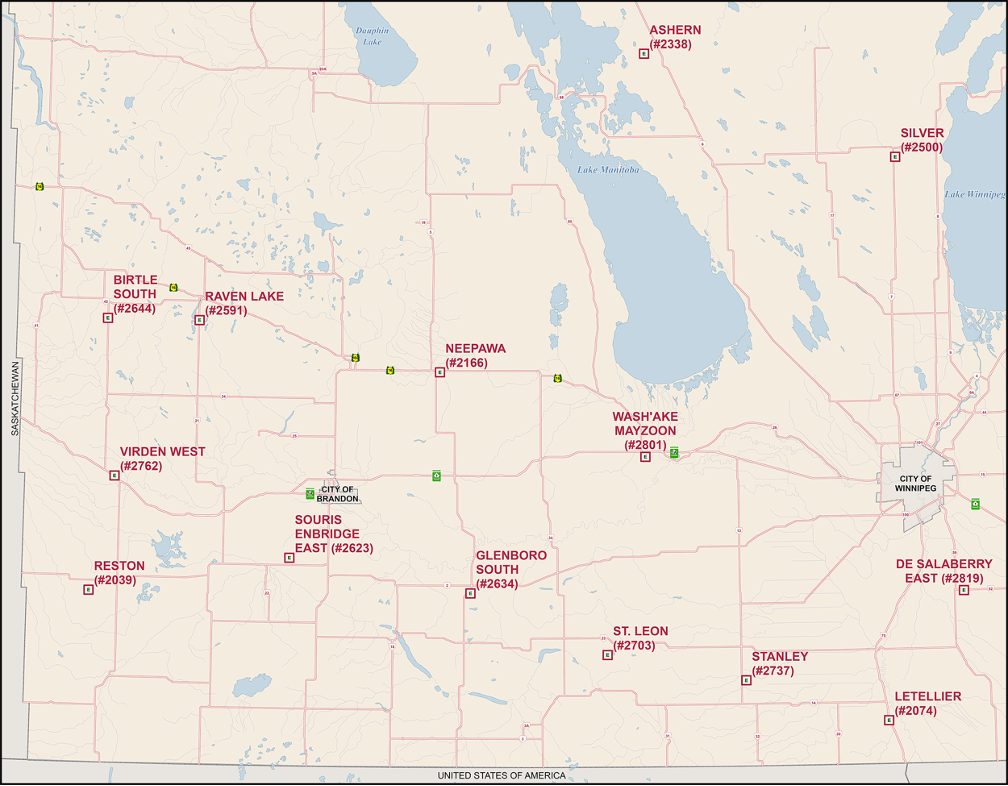
Manitoba’s Renewable Energy Future: The 600 MW Wind Power Initiative
Author: Rachelle Lynne-Davies, P.Eng. and Rim Assaad
Image Source: Manitoba Chambers of Commerce. (2024) Setting direction for Manitoba’s electric future: The affordable energy plan. Available at: https://mbchamber.mb.ca/2024/10/01/setting-direction-for-manitobas-electric-future-the-affordable-energy-plan/ (Accessed: 21 March 2025).
Manitoba Hydro has issued Notice of Planned Procurement (NPP) 043392 to notify interested parties about an upcoming Expression of Interest (EOI 043393) and subsequent Request for Proposals (RFP 043394) for the Wind Call for Power Project. This initiative aims to procure up to 600 MW of wind energy in Southern Manitoba.
To support this initiative, Manitoba Hydro hosted the Wind Call for Power Symposium on March 19, 2025, in Winnipeg. The event convened key stakeholders—including Indigenous Nations, developers, consultants and government representatives—to provide detailed information on the procurement process and upcoming opportunities. Compass was in attendance, offering us valuable insight into the project’s direction and stakeholder priorities.
Key Dates
*Dates are subject to change
Key Procurement Details
- Procurement Target: Up to 600 MW of wind power.
- Maximum Facility Size: Each wind project can generate up to 200 MW.
- Interconnection Points: Projects must connect within 20 km of one of 14 Manitoba Hydro substations at 230 kV (Southern Manitoba).
- Equity Ownership Requirement: Projects must be majority-owned by Indigenous Nation(s) or the Manitoba Métis Federation (MMF).
Project Location
The Wind Call for Power will focus on Southern Manitoba, where wind energy potential is high. Developers must select project sites that are:
- Within 20 km of one of 14 designated Manitoba Hydro substations, as shown in Figure 1 below.Exploratory Study Findings: Manitoba Hydro conducted an exploratory study to identify potential locations for integrating new wind generation. A total of 19 potential sites were assessed to evaluate available transmission capability and estimate the approximate cost of a new 230 kV transmission line (WPP tie line) and necessary system upgrades.
- Feasible for environmental approvals and permitting.
- Strategically positioned to ensure effective grid integration.
- Long Lead Time Considerations: Manitoba Hydro will soon address long lead-time items, including wind resource assessment data collection, to assist developers in project planning.

Indigenous Equity Ownership
Indigenous Equity Ownership is a key requirement for this initiative. To qualify, projects must meet the following criteria:
- Indigenous Majority Ownership (51%+ Equity): Required for all projects.
- Eligible Indigenous Nations:
- A First Nation In Manitoba, recognized and identified by Canada, or
- The Manitoba Métis Federation (MMF).
- Encouraging Partnerships: The initiative promotes collaboration between Indigenous groups and experienced wind developers.
- Equity Ownership: Defined as the right to receive or participate in financial returns—or exposure to financial risk—from a wind generation facility, through direct or indirect ownership interests such as shares, partnership stakes, or other similar equity structures.
- Flexible Structure: Indigenous Consortia (ICs) have flexibility in structuring ownership while maintaining decision-making rights.
Financing Support from the Canada Infrastructure Bank (CIB)
The CIB is committed to supporting Indigenous participation in renewable energy projects by offering loan financing for Indigenous communities involved in wind power development.
- Flexible Loan Terms – CIB provides long-term, low-cost financing to help Indigenous communities secure equity stakes in wind projects.
- Empowering Indigenous Ownership – This funding aligns with the requirement for a minimum 51% Indigenous ownership, enabling communities to participate meaningfully in the energy sector.
- Reducing Financial Barriers – By offering affordable capital, CIB helps Indigenous groups reduce financial constraints, making large-scale renewable energy projects more accessible.
Manitoba’s Grid Connection Process (Resource Solicitation Process)
To connect to Manitoba Hydro’s grid, all proponents must participate in the Resource Solicitation Process outlined in the utility’s Open Access Interconnection Tariff (OAIT).
Interconnection Requests (IRs) must be submitted through the RFP process. Manitoba Hydro, acting as the Solicitor, will then submit all IRs at once via OASIS for evaluation in the Resource Solicitation Study, ensuring equal queue priority.
Note: Any previously submitted IRs must be suspended—early submission does not confer an advantage.
Developers seeking to connect new power projects to Manitoba Hydro’s grid must follow a structured interconnection process, which consists of two key phases described in greater detail below. It is important to note that these phases occur post-bid submission.
- Pre-Interconnection Feasibility Study (Pre-IFS)
- Assesses technical feasibility and cost estimates.
- Developers submit requests, attend scoping meetings, and receive feasibility study reports.
- If feasible, the project advances to post-IFS.
- Post-Interconnection Feasibility Study (Post-IFS)
- Developers sign agreements, and construction begins.
- Once Commercial Operation Date (COD) requirements are met, the project is fully integrated into the grid.
Environment Act License Proposal Submission
To ensure wind power projects can begin construction in Spring 2027, developers must follow this two-step submission process for the Environment Act License:
- Environment Act Intent to Apply
- Critical Submission Date: April 2026
- Required Document: Environmental Act Intent to Apply Form
- Environment Act Proposal Submission
- Critical Submission Date: November 2026
- Required Documents:
- Cover letter
- Environment Act Proposal Form
- Reports, plans, and other information as required by the new guidelines*
- Application fee
- Wind projects exceeding 10MW must obtain an Environment Act license in Manitoba, categorized as follows:
- Class 2 development license: Capacity between 10 and 100 megawatts (MWs)
- Class 3 development license: Over 100MW (Ministerial approval required)
*New Wind Power Environmental Assessment and Licensing guidelines are being developed and will be available online soon.
How Compass Energy Consulting Can Help
Compass Energy Consulting offers expert bid management services, helping developers navigate the intricate details of the procurement process. Our team will:
- Break down complex procurement documents into a clear RFP tracker tool.
- Identify long lead-time requirements.
- Align your team with structured kick-off calls and internal deadlines.
- Submit clarifications to resolve any complexities or contradictions.
- Provide guidance on strategic bid scoring maximization.
- Draft key sections of your proposal and perform rigorous quality control.
Why Compass Energy Consulting?
Our consulting services can provide valuable assistance to independent power producers and stakeholders in navigating the RFP process by dissecting the relevant documents and ensuring that all requirements are understood and met.
Founded in 2011, Compass has been providing regulatory and compliance support to the renewable energy marketplace throughout Canada and the Northeastern U.S. for over a decade. Our team of consultants help developers participate and win in some of the largest procurements, like BC Hydro’s Call for Power, Ontario IESO’s Long-Term Procurements, and NYSERDA’s Tier 1 REC RFP.
Please reach out to Rachelle Lynne-Davies at rachelle@compassenergyconsulting.ca or 416-803-6945 to discuss further.
Overview of Manitoba’s Electricity Sector
Manitoba relies heavily on renewable energy, with over 97% of its electricity generated from hydro, wind, and solar power, while less than 1% comes from natural gas and other fuels like diesel. The province’s commitment to sustainable energy has positioned it as a key player in reducing carbon emissions and promoting long-term energy security.
The province has two major wind farms, the St. Joseph Wind Farm (138 MW) and St. Leon Wind Farm (120 MW), which together produce enough electricity to power approximately 90,000 homes. These wind projects contribute to the diversification of Manitoba’s energy portfolio and enhance the province’s ability to meet electricity demands with low-emission energy sources.
Manitoba Hydro exports surplus electricity to the United States, Saskatchewan, and Ontario, generating significant revenue. Between 2010 and 2019, power exports accounted for more than 22% of Manitoba Hydro’s total electricity revenue, amounting to approximately $3.9 billion. These exports not only help balance supply and demand within the province but also provide economic benefits and financial stability for Manitoba Hydro. The province’s renewable energy surplus strengthens its position as a clean energy exporter, supporting neighboring regions in their transition to greener electricity grids.
Manitoba’s Affordable Energy Plan
Manitoba's Affordable Energy Plan, unveiled in September 2024, outlines a comprehensive strategy to maintain low energy costs while transitioning to sustainable energy sources. The plan emphasizes energy efficiency, the expansion of clean heating solutions, and the development of Indigenous-owned wind energy projects.

Key Objectives of the Plan:
- Maximize Energy Savings: Improve energy efficiency in homes and businesses, reducing costs and emissions.
- Expand Clean Heating: Support electric heat pumps and clean heating technologies for affordability and sustainability.
- Increase Affordable Electricity Supply: Develop 600 MW of Indigenous-owned wind projects and enhance grid infrastructure.
- Secure Manitoba’s Energy Future: Create clean energy jobs and promote electric vehicle adoption with incentives and infrastructure.
- Support Indigenous Participation: Introduce an Indigenous Loan Guarantee Program to assist First Nations and Métis communities in renewable energy investments.
